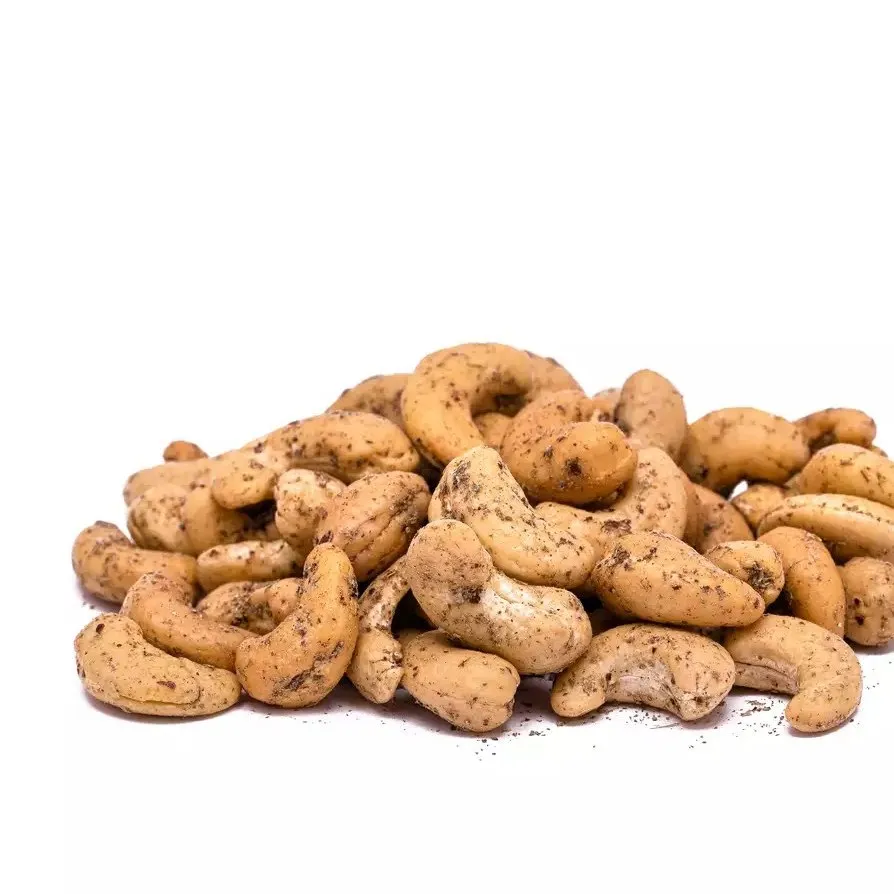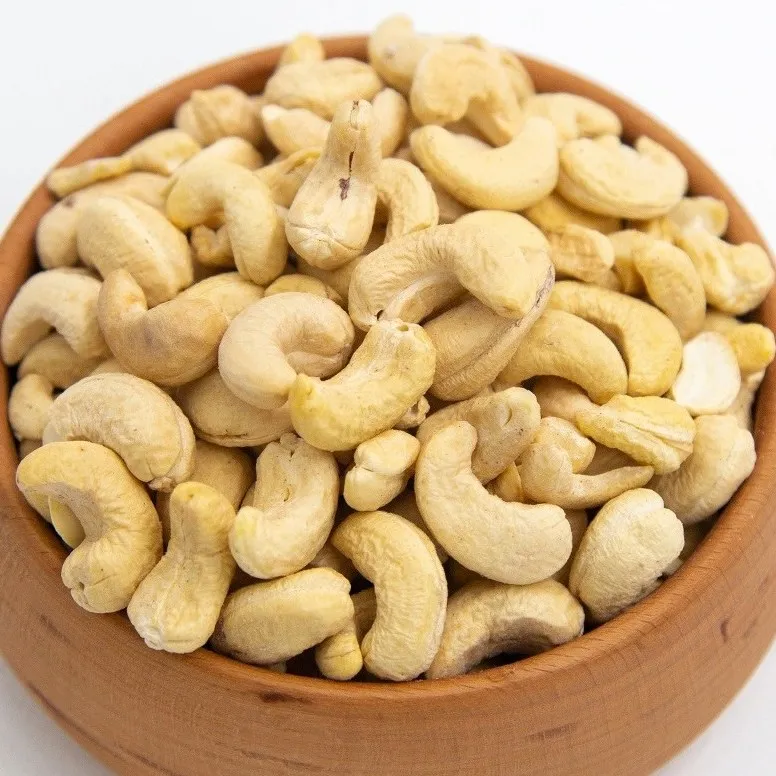Cashews have gained popularity worldwide as a delicious and nutritious snack. Originating from Brazil, this versatile nut has a fascinating history and has become an important crop in many countries around the world. In this summary, we will explore the origin of cashews and how they have transitioned from a wild plant to a global commodity.
The cashew tree, scientifically known as Anacardium occidentale, is native to the tropical regions of Brazil. It is believed that the cashew tree was first discovered by Portuguese explorers in the 16th century during their voyages to Brazil. The tree’s scientific name, Anacardium occidentale, is derived from the Portuguese word “caju,” which means the fruit of the cashew tree.
Initially, native tribes in Brazil utilized the cashew tree primarily for its fruit, which has a distinctive kidney-like shape. The fruit consists of two parts—the cashew apple, which is the fleshy pear-shaped structure at the top, and the cashew nut, which is the kidney-shaped kernel attached to the bottom of the fruit. The cashew apple is edible and has a sweet-tart flavor, but it is the cashew nut that caught the attention of explorers and traders.
Portuguese traders recognized the commercial potential of cashew nuts and began exporting them to Europe. The nuts attracted attention due to their unique taste and nutritional value. Unlike other nuts, cashews are not encased in a hard shell but are attached to the bottom of the cashew apple. This distinctive structure made cashews challenging to transport and store, thereby explaining their high cost in earlier times.
As cashews gained popularity in neighboring countries, their cultivation expanded. Cashew trees were introduced to India by the Portuguese in the 16th century. The tree’s ability to thrive in the tropical climate of India led to the establishment of cashew plantations in the coastal regions of the country. Today, India is one of the largest producers and exporters of cashews in the world.
Cashews also found their way to other parts of the world through colonial trade. Portuguese traders introduced cashews to East Africa, where the trees thrived in the coastal regions of Mozambique, Tanzania, and Kenya. These countries have since become significant players in the cashew industry, exporting cashews globally.
Over time, cashew cultivation spread to other tropical regions, including Southeast Asia, the Caribbean, and Central and South America. The trees thrived in these regions, as they require specific climatic conditions—generally, temperatures between 25 to 35°C (77 to 95°F) and a rainfall range of 800 to 4,000 millimeters (32 to 160 inches) per year. Today, countries like Vietnam, Nigeria, Indonesia, Ivory Coast, and Brazil are major cashew producers.
Cashews are known for their nutritional benefits. They are rich in healthy fats, protein, vitamins, minerals, and antioxidants. They contain lower levels of fat compared to other nuts and have a high percentage of monounsaturated fats, which are believed to be heart-healthy. Cashews are also a good source of vitamins B and E, minerals such as magnesium, zinc, and phosphorus, and plant compounds like polyphenols and phytosterols.

The global demand for cashews has continued to increase, driven by their popularity as a snack and their use in various culinary applications. Cashews are widely used in cooking, baking, and as ingredients in dishes such as curries, stir-fries, salads, and desserts. They are also processed into cashew butter, oil, and milk, which are used as alternatives to dairy-based products in vegan and lactose-free diets.
The cashew industry plays a significant role in the economies of many cashew-producing countries. It provides employment opportunities, especially in rural areas where cashew farming is a vital source of income for small-scale farmers. The cashew industry also contributes to the national economies through exports, generating foreign exchange earnings and improving trade balance.
However, challenges exist within the cashew industry. For instance, the labor-intensive nature of cashew processing leads to concerns over labor conditions and fair wages for workers. There have been efforts to improve transparency and ensure ethical practices within the industry, such as certifications like Fairtrade and Rainforest Alliance. Additionally, cashew farming is vulnerable to climate change, as extreme weather events can affect crop yields and quality.
In summary, cashews have a long and intriguing history that originated in Brazil. From their discovery by Portuguese explorers to their spread to various tropical regions around the world, cashews have become a popular and essential crop globally. Recognized for their nutritional value and diverse culinary applications, cashews contribute to the economies of cashew-producing countries and provide livelihoods for many farmers. Despite challenges faced by the industry, the demand for cashews continues to rise, making it an important commodity in the international market.1. Cashew Production and Trade: An Overview
The cashew industry has experienced significant growth over the years, both in terms of production and international trade. According to the Food and Agriculture Organization (FAO), global cashew production reached approximately 4.8 million metric tons in 2019. The largest producers include India, Vietnam, Nigeria, Ivory Coast, and Brazil. These countries account for a significant portion of the global cashew supply, and their production levels determine market prices and availability.
2. Processing and Value Addition in the Cashew Industry
Processing cashews involves several stages, from harvesting the cashew apples to separating the nuts and finally drying and roasting them. The process requires skilled labor due to the presence of harmful substances, such as anacardic acid, in the cashew shells. Value addition in the cashew industry is crucial for maximizing profits. This can include processing the cashews into various products like roasted and flavored nuts, cashew butter, or inclusion in other food products such as chocolates and baked goods.
3. Cashew Export Market and International Trade
Cashews are one of the most widely traded nuts globally, with a significant share of the production being exported to various countries. According to the International Trade Centre (ITC), the total global cashew exports amounted to over $7 billion in 2019. The biggest importers of cashews include the United States, the European Union, the United Arab Emirates, and China. These countries have a high demand for cashews due to their culinary uses and the growing popularity of healthy snacks.

4. Emerging Markets for Cashews
While traditional markets for cashews, such as Europe and the United States, remain important, there are emerging markets that present significant growth opportunities for the cashew industry. One such market is China, where the consumption of cashews has been steadily increasing in recent years. With its large population and rising income levels, China offers immense potential for cashew producers and exporters. Other emerging markets include Southeast Asian countries like Malaysia and Thailand, where cashews are gaining popularity as a healthy snack.
5. Health and Wellness Trends Driving Cashew Consumption
The rise in health and wellness trends has had a positive impact on the demand for cashews. Consumers are increasingly seeking out healthy snacking options, and cashews fit the bill perfectly. As a nutrient-dense nut rich in healthy fats, protein, and antioxidants, cashews are considered a healthy and satisfying snack. Moreover, the growing interest in plant-based diets and the search for dairy alternatives has led to the popularity of cashew-based products like cashew milk and cashew-based cheese.
6. Sustainable Cashew Farming Practices
With increasing consumer demand for sustainably sourced products, there is a growing focus on sustainable cashew farming practices. Cashew farmers are adopting methods that promote ecological balance, reduce chemical usage, and promote biodiversity on their farms. Additionally, fair trade certifications and initiatives are gaining prominence, ensuring that cashew farmers receive fair prices for their products and that labor conditions are ethical.
7. Challenges in the Cashew Industry
Like any agricultural sector, the cashew industry faces several challenges. One of the main challenges is climate change, which can lead to unpredictable weather patterns, affecting cashew yields and quality. Pests and diseases, such as cashew bacterial blight and fungal infections, also pose a threat to cashew trees. Additionally, the industry grapples with issues related to fair labor practices, such as decent wages for workers and safe working conditions in processing plants.
8. Technological Advancements in Cashew Processing

Technological advancements have played a significant role in improving the cashew processing industry. Automated machines and equipment have reduced labor requirements and increased processing efficiency. These advancements not only make processing faster but also ensure consistent quality and reduced post-harvest losses. Moreover, technological innovations have facilitated the development of cashew by-products and derivatives, expanding the range of cashew-based products available in the market.
9. Cashews as a Source of Income for Small-Scale Farmers
Cashew farming provides a livelihood for millions of small-scale farmers in cashew-producing countries. In many cases, cashews are a cash crop that generates income for farmers who may have limited access to other income-generating opportunities. Cashew farming offers employment opportunities for the local communities, contributing to poverty reduction and rural development.
10. The Role of Research and Development in Cashew Production
Research and development play a crucial role in improving cashew production and addressing challenges faced by the industry. Efforts are being made to develop cashew varieties with improved disease resistance, higher yields, and better nut quality. Research institutions and agricultural organizations collaborate with farmers to introduce new cultivation techniques, improve processing methods, and promote best practices for sustainable cashew farming.
11. Opportunities for Entrepreneurs in the Cashew Industry
The cashew industry presents opportunities for entrepreneurs at various stages of the value chain. From cashew cultivation and processing to marketing and distribution, there are several avenues for entrepreneurship. Developing value-added cashew products, such as flavored or gourmet cashews, can also tap into niche markets and cater to specific consumer preferences. Furthermore, opportunities exist for investment in technological advancements and sustainable practices, making the cashew industry more efficient and environmentally friendly.
12. Conclusion: The Future of the Cashew Industry
The cashew industry has come a long way since its discovery in Brazil. With its widespread cultivation, global trade networks, and increasing consumer demand, the future of the cashew industry looks promising. However, to thrive in a competitive market, cashew producers and stakeholders need to embrace sustainable practices, invest in research and development, and adapt to changing consumer preferences. With the right strategies and innovative approaches, the cashew industry can continue to flourish and contribute to the economic development of cashew-producing countries.










